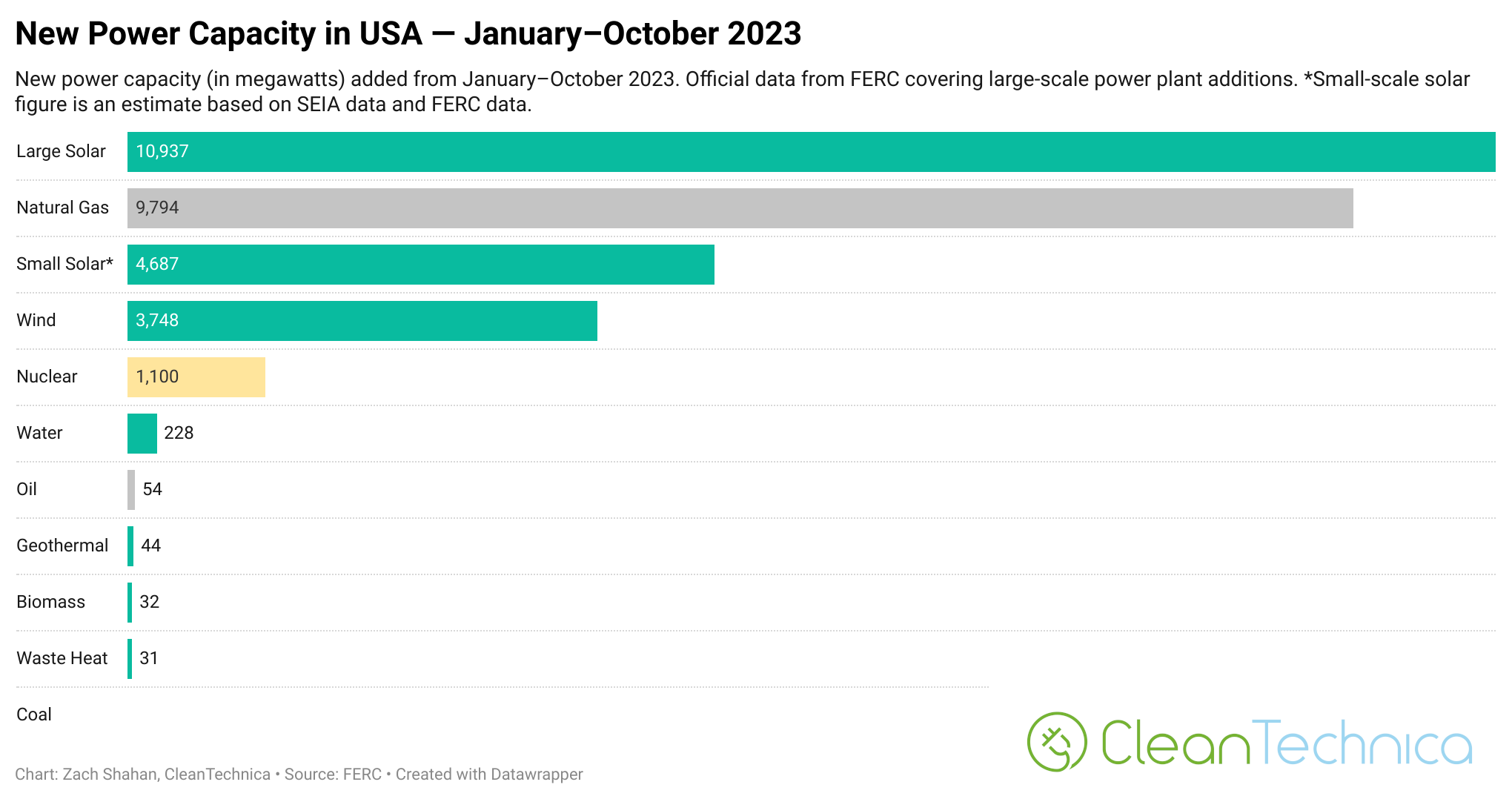Sign up for daily news updates from CleanTechnica on email. Or follow us on Google News!
Looking at official figures from Federal Energy Regulatory Commission (FERC) and adding in a CleanTechnica estimate for small-scale solar power additions, we conclude that 71% of new power capacity additions in the United States came from solar power and wind power in October.
Month-to-month variations in new power additions can warp one’s perspective on the market, though. Looking at a longer period of time, the first 10 months of the year combined, solar and wind accounted for 64% of new power capacity. That’s down a bit from 72% in the first 10 months of 2022, but it’s still a strong majority of new power capacity additions across the US. Notably, one significant addition this year was a nuclear power plant, which is indeed a zero-emissions energy source and contributed another 3.6% of new power capacity. Hydropower also contributed 0.7% of new power capacity. Altogether, adding renewable energy sources to nuclear, zero-emissions sources contributed 67.9% of new power capacity in the first 10 months of this year.
The big fossil fuel source adding capacity was again “natural gas” (aka “fossil gas”), which contributed 31.9% of new power capacity in the first 10 months of 2023 compared to the first 10 months of 2022.
If we jump to total cumulative installed capacity, the highlight is that renewable energy sources have risen to 23.1% of total installed power capacity across the country. That’s up from 21.5% of total installed power capacity across the country in October 2022. Solar power now accounts for 12.1%, wind power accounts for 11%, and hydropower accounts for 7.5%.
There was only one month this year when renewable energy sources (almost entirely solar and wind, to be more specific) accounted for less than 50% of new power capacity. That was in April, when the sun and wind technologies as well a little bit of geothermal power accounted for 49.3% of new power capacity. There was one month this year in which renewables accounted for 100% of new power capacity — March. However, they also came close to that in September, adding 97.8% of new power capacity, and they had great months relative to the dirty energy sources they compete with in July (74.5%) and October (71.4%).
Stay tuned for our coming report on US electricity generation.
Have a tip for CleanTechnica? Want to advertise? Want to suggest a guest for our CleanTech Talk podcast? Contact us here.
Our Latest EVObsession Video
I don’t like paywalls. You don’t like paywalls. Who likes paywalls? Here at CleanTechnica, we implemented a limited paywall for a while, but it always felt wrong — and it was always tough to decide what we should put behind there. In theory, your most exclusive and best content goes behind a paywall. But then fewer people read it!! So, we’ve decided to completely nix paywalls here at CleanTechnica. But…
Thank you!
CleanTechnica uses affiliate links. See our policy here.







